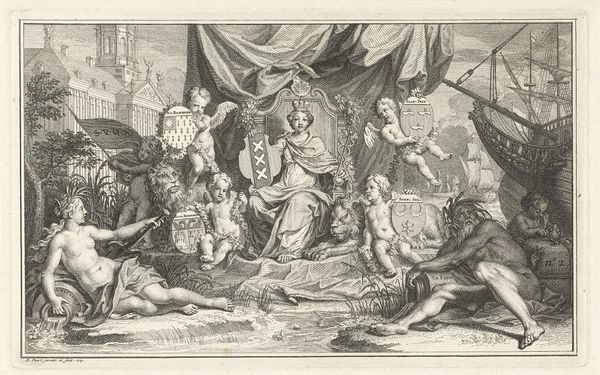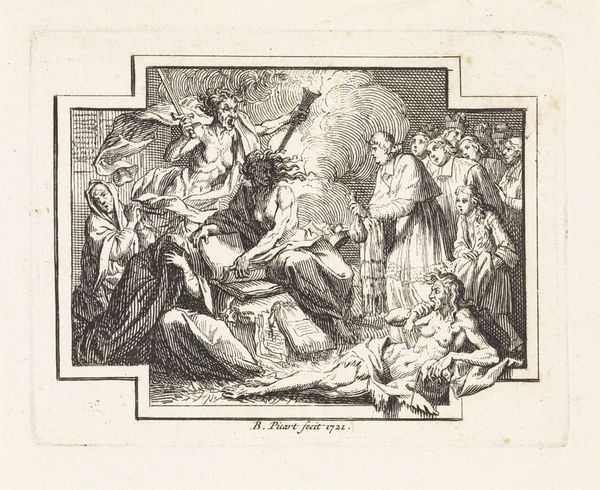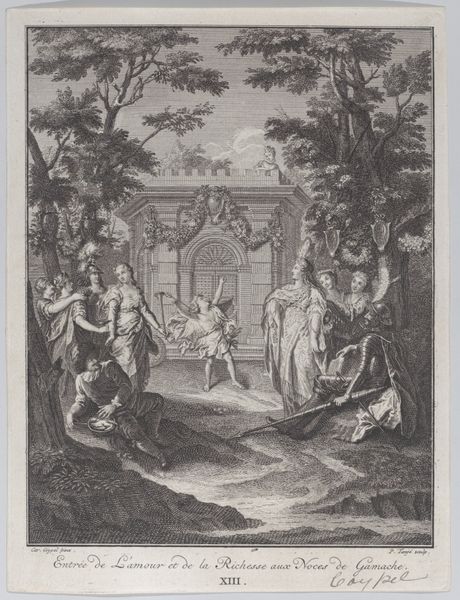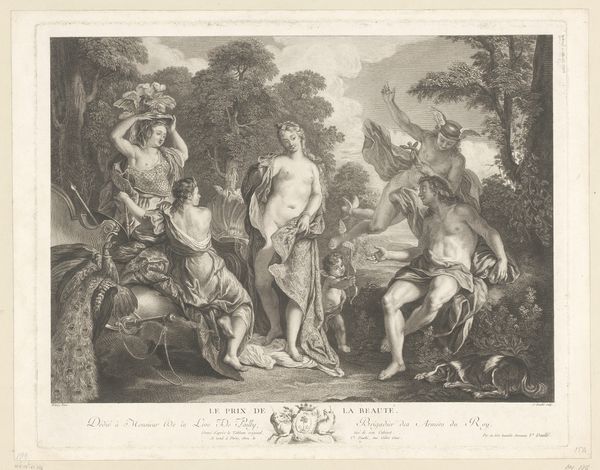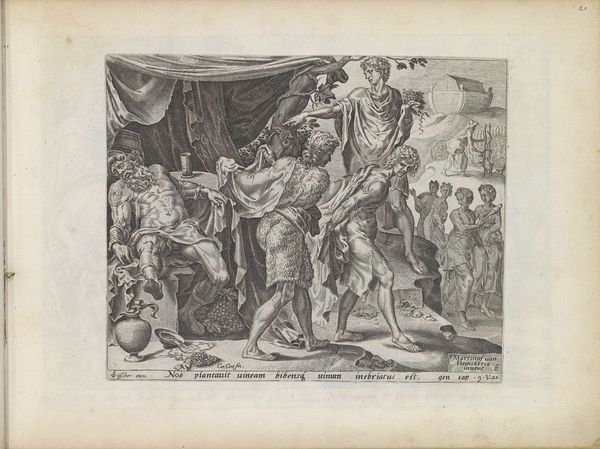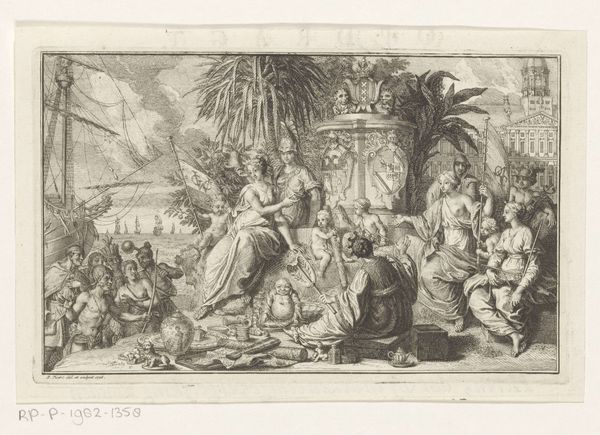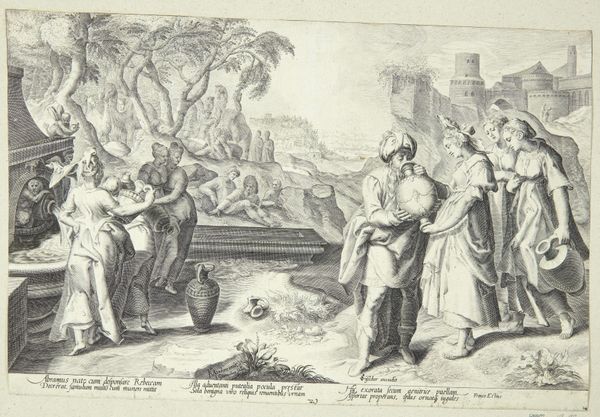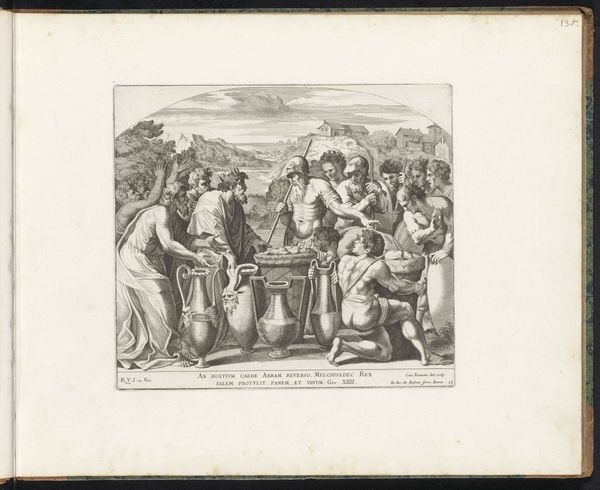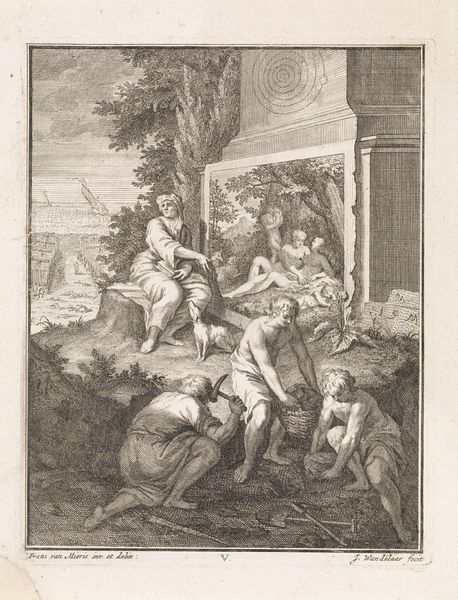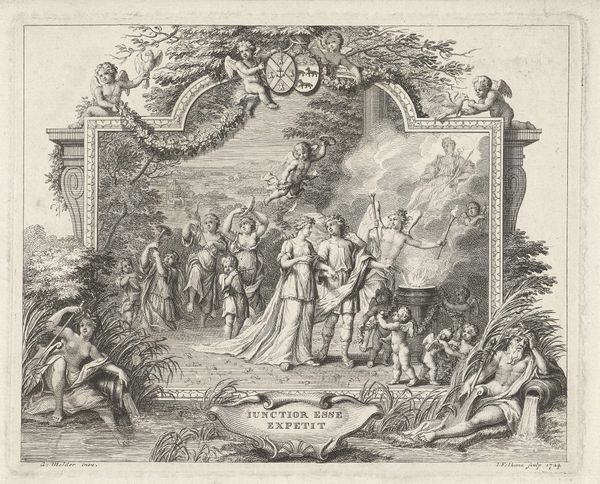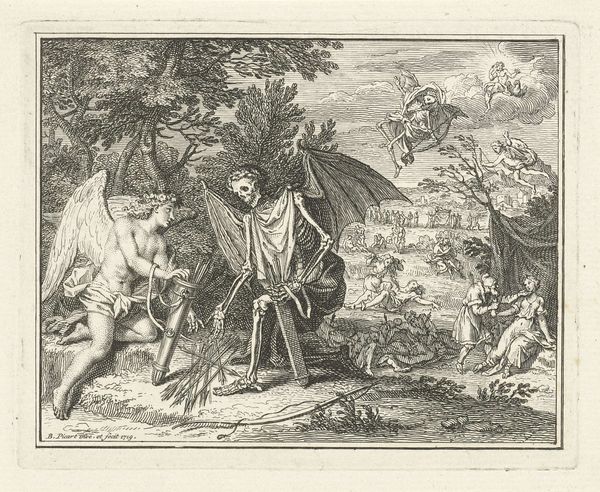
engraving
#
portrait
#
allegory
#
baroque
#
figuration
#
line
#
history-painting
#
engraving
Dimensions: height 151 mm, width 186 mm
Copyright: Rijks Museum: Open Domain
Bernard Picart created this allegorical image of the Welsh coat-of-arms with etching, a printmaking technique that democratized image-making in the early modern period. The process begins with a metal plate, usually copper. The artist coats the plate with a waxy, acid-resistant substance, then scratches away the coating with a sharp needle, exposing the metal. The plate is then submerged in acid, which bites into the exposed lines, creating grooves. Ink is applied to the plate, filling the etched lines, and the surface is wiped clean. Finally, the plate is pressed onto paper, transferring the ink and creating the image. Etching allowed for the relatively quick reproduction of images, making art and information more accessible. But, it also relied on skilled labor and the market for prints. In this context, Picart's intricate lines not only depict the symbols of Wales, but also reflect the burgeoning print culture and economy of his time. The very act of making the print speaks to social transformations, with the traditional heraldic imagery recast as a commodity.
Comments
No comments
Be the first to comment and join the conversation on the ultimate creative platform.

